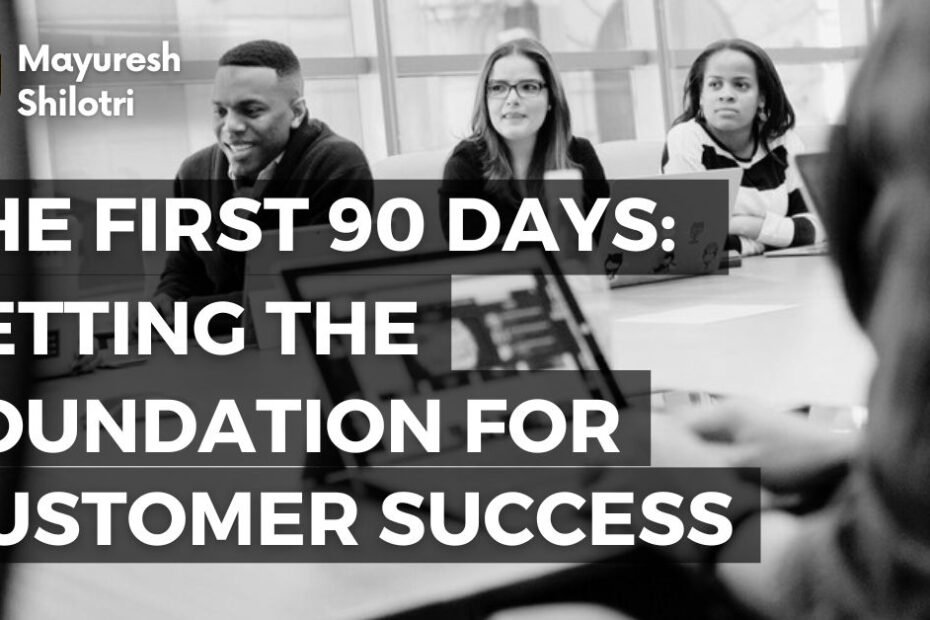In the realm of customer success, the foundation of a fruitful relationship lies in a deep understanding of the customer’s needs and goals. This process begins with active listening and engaging in meaningful conversations that allow for the exploration of the customer’s unique challenges and aspirations. By employing techniques such as open-ended questions and reflective listening, organizations can uncover not only the explicit needs of their customers but also the underlying motivations that drive their decisions.
For instance, a software company might discover that a client is not just looking for a tool to manage their projects but is also seeking to enhance team collaboration and improve overall productivity. This insight can significantly shape the way solutions are tailored to meet the customer’s expectations. Moreover, understanding customer goals extends beyond immediate needs; it involves anticipating future requirements and aligning them with the customer’s long-term vision.
This foresight can be achieved through regular check-ins and strategic discussions that delve into the customer’s industry trends, competitive landscape, and evolving business objectives. For example, a financial services firm may recognize that a client is aiming to expand into new markets. By understanding this goal, the firm can proactively offer solutions that facilitate market entry, such as compliance tools or market analysis services.
This proactive approach not only strengthens the relationship but also positions the service provider as a trusted advisor rather than just a vendor.
Key Takeaways
- Understanding the customer’s needs and goals is crucial for providing personalized support and solutions.
- Onboarding and training are essential for ensuring a smooth transition and successful adoption of products or services.
- Establishing key performance indicators (KPIs) helps in measuring and tracking the success of customer relationships.
- Creating personalized success plans for each customer ensures that their unique goals and challenges are addressed.
- Building strong relationships with key stakeholders is important for gaining support and advocacy for the customer’s success.
Onboarding and Training for a Seamless Transition
The onboarding process is a critical phase in the customer journey, serving as the bridge between initial engagement and long-term success. A well-structured onboarding program ensures that customers feel supported and confident in using the product or service from day one. This phase typically includes comprehensive training sessions tailored to different user roles within the organization.
For instance, if a company implements a new customer relationship management (CRM) system, sales representatives may require training focused on lead tracking and reporting, while marketing teams might need guidance on campaign management features. By customizing training content to meet specific user needs, organizations can enhance user adoption rates and minimize frustration. In addition to role-specific training, onboarding should also encompass an overview of best practices and tips for maximizing the value of the product or service.
This could involve providing customers with access to resources such as video tutorials, user manuals, and community forums where they can connect with other users. Furthermore, assigning a dedicated onboarding specialist can significantly enhance the experience by offering personalized support throughout the transition period. This specialist can address any questions or concerns that arise, ensuring that customers feel valued and understood.
A seamless onboarding experience not only fosters customer satisfaction but also lays the groundwork for a successful long-term partnership.
Establishing Key Performance Indicators for Success
To effectively measure customer success, it is essential to establish clear Key Performance Indicators (KPIs) that align with both the customer’s objectives and the service provider’s offerings. KPIs serve as quantifiable metrics that provide insight into how well a customer is achieving their goals with the help of a product or service. For example, if a customer’s primary goal is to increase sales revenue, relevant KPIs might include metrics such as lead conversion rates, average deal size, and sales cycle length.
By collaboratively defining these indicators with the customer, organizations can create a shared understanding of what success looks like. Moreover, KPIs should be revisited regularly to ensure they remain relevant as business needs evolve. This iterative process allows for adjustments based on changing market conditions or shifts in customer strategy.
For instance, if a customer initially focused on increasing sales now aims to enhance customer retention, KPIs might shift towards measuring customer satisfaction scores or churn rates. By maintaining flexibility in KPI definitions, organizations can better support their customers in achieving sustained success over time.
Creating a Personalized Success Plan for Each Customer
A personalized success plan is an invaluable tool for guiding customers toward their desired outcomes while ensuring alignment with their unique circumstances. This plan typically outlines specific goals, strategies for achieving them, and timelines for implementation. By collaborating with customers to develop this plan, organizations demonstrate their commitment to understanding individual needs and fostering a tailored approach to success.
For instance, if a healthcare provider is implementing a new electronic health record (EHR) system, their success plan might include milestones such as staff training sessions, data migration timelines, and user feedback checkpoints. In addition to outlining goals and strategies, a personalized success plan should also incorporate resources and support mechanisms available to the customer. This could include access to dedicated account managers, technical support teams, or educational resources such as webinars and workshops.
By clearly articulating these resources within the success plan, organizations empower customers to leverage all available tools to achieve their objectives. Furthermore, regular reviews of the success plan can facilitate ongoing dialogue between the organization and the customer, allowing for adjustments based on progress and changing priorities.
Building Strong Relationships with Key Stakeholders
Building strong relationships with key stakeholders within a customer’s organization is crucial for fostering long-term success. These stakeholders often include decision-makers, end-users, and influencers who play significant roles in shaping how products or services are utilized. Establishing rapport with these individuals requires consistent communication and engagement strategies tailored to their specific interests and concerns.
For example, regular check-ins with executive sponsors can provide insights into strategic priorities while also reinforcing the value of the partnership at higher organizational levels. Additionally, understanding the dynamics of each stakeholder’s role can enhance relationship-building efforts. For instance, while technical users may prioritize product functionality and support responsiveness, executives may focus more on return on investment (ROI) and overall business impact.
By addressing these varying perspectives in communications and meetings, organizations can create a more holistic approach to relationship management. Furthermore, recognizing and celebrating milestones achieved by stakeholders—such as successful project completions or positive performance metrics—can strengthen bonds and foster a sense of shared accomplishment.
Proactive Communication and Support
Proactive communication is essential in maintaining strong relationships with customers and ensuring they feel supported throughout their journey. This approach involves anticipating customer needs and reaching out before issues arise or before customers even realize they need assistance. For example, if a software provider notices that a customer has not logged into their platform for an extended period, a proactive outreach message can help identify any challenges they may be facing or offer additional training resources to re-engage them.
Moreover, establishing regular communication touchpoints—such as quarterly business reviews or monthly check-ins—can help keep customers informed about product updates, industry trends, and best practices. These interactions not only provide valuable information but also reinforce the organization’s commitment to customer success. Additionally, leveraging technology such as automated email campaigns or customer relationship management (CRM) systems can streamline communication efforts while ensuring that customers receive timely updates tailored to their interests.
Monitoring and Measuring Customer Success
Monitoring and measuring customer success is an ongoing process that requires both qualitative and quantitative approaches. Organizations should implement systems to track KPIs established during initial discussions while also gathering qualitative feedback through surveys or interviews. For instance, using Net Promoter Score (NPS) surveys can provide insights into customer satisfaction levels and likelihood to recommend the service to others.
Analyzing this data allows organizations to identify trends over time and make informed decisions about areas for improvement. In addition to tracking performance metrics, organizations should also engage in regular conversations with customers to understand their experiences better. These discussions can reveal valuable insights into how customers perceive value from the product or service and highlight any pain points they may encounter.
By combining quantitative data with qualitative feedback, organizations can develop a comprehensive view of customer success that informs future strategies and initiatives.
Gathering Feedback and Making Continuous Improvements
The process of gathering feedback from customers is vital for driving continuous improvement within an organization’s offerings. Regularly soliciting input through surveys, focus groups, or one-on-one interviews allows organizations to stay attuned to customer needs and preferences. For example, after implementing a new feature in a software product, soliciting feedback from users can provide insights into its effectiveness and usability.
This feedback loop not only helps identify areas for enhancement but also demonstrates to customers that their opinions are valued. Furthermore, organizations should be prepared to act on feedback received by implementing changes based on customer suggestions or concerns. This responsiveness fosters trust and reinforces the idea that the organization is committed to delivering value over time.
Additionally, sharing updates about improvements made as a result of customer feedback can further strengthen relationships by showcasing an organization’s dedication to continuous enhancement of its products or services. By embedding feedback mechanisms into their operational processes, organizations can create a culture of continuous improvement that ultimately benefits both customers and the business itself.





